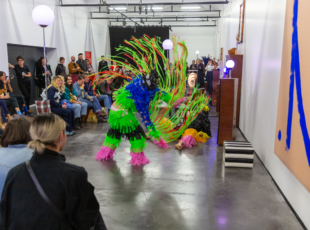Hicham Berrada, the elements stand the test of time
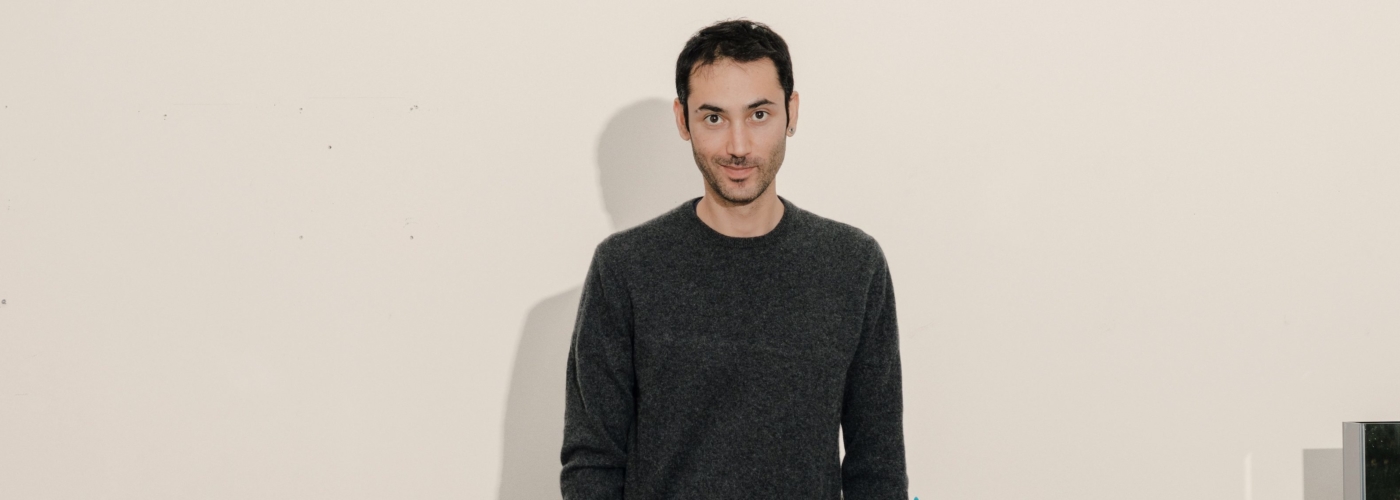
Article author :
The works created by Hicham Berrada are identifiable at first glance: in them are found tanks, aquariums and vivaria which host a range of random and colourful shapes with the appearance of algae, corals or rocks. Since the years 2000, the artist has been exploring the chemical and physical reactions which most imitate the mechanisms of morphogenesis. From the birth of shapes, to their demise…
Whether it be by video, the visual arts or live performance, Hicham Berrada has made the manipulation of chemical elements his guiding thread. In the performance Présages (2007 to the present day), we observe the Moroccan artist handling and overturning various items in a tank (a glass container used by chemists) filled with an aqueous solution. Within a few moments, an aquatic landscape emerges. In the worlds of Hicham Berrada stunning shapes and colours appear. The chemical reactions which form and unravel are filmed and projected live for the viewers present. ‘Movement interests me, but it is above all the birth of shapes which is at the heart of my art project. Rock formations allow the history of landscapes to be read, an understanding of the forces which have been at work. I am awestruck by the creations of nature,’ Hicham Berrada tells us.
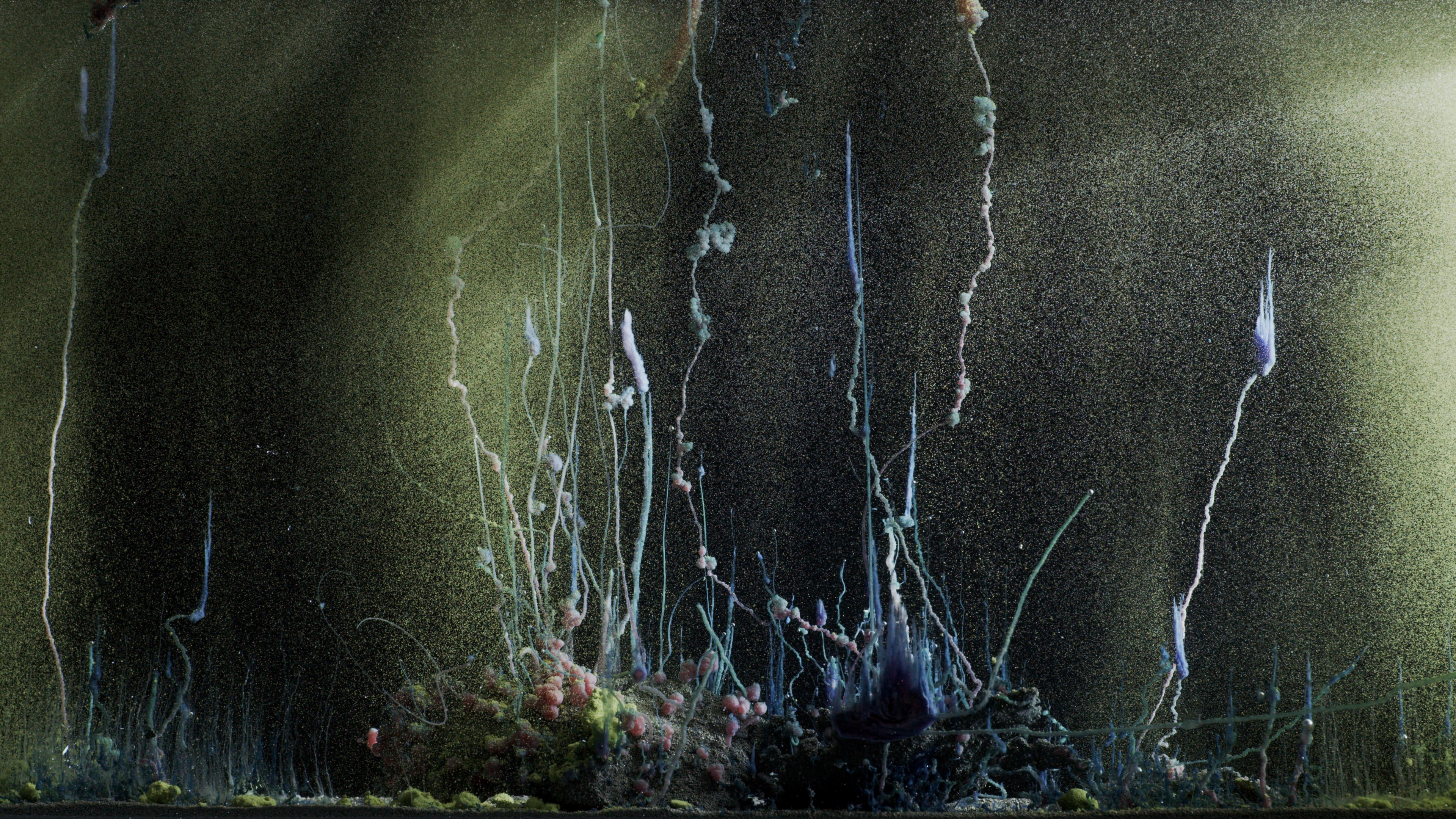
This fascination was in part bestowed on him during childhood. ‘My mother is a biologist and my father is a pharmacist. Both of them are captivated by the observation of rocks and plant species. When I was younger, I remember atlases and encyclopaedias cataloguing the types of rock or the varieties of mushroom…’ As for his penchant for chemistry and physics, there was no predisposition involved, rather skills acquired later in life, with a defined objective. ‘These two scientific disciplines are a part of my method. For physicists, less than twenty mathematical operations explain the creation of all the shapes possible. Chemistry and physics enable me to have a grip on the real, to control the ways the shapes appear,’ he explains.





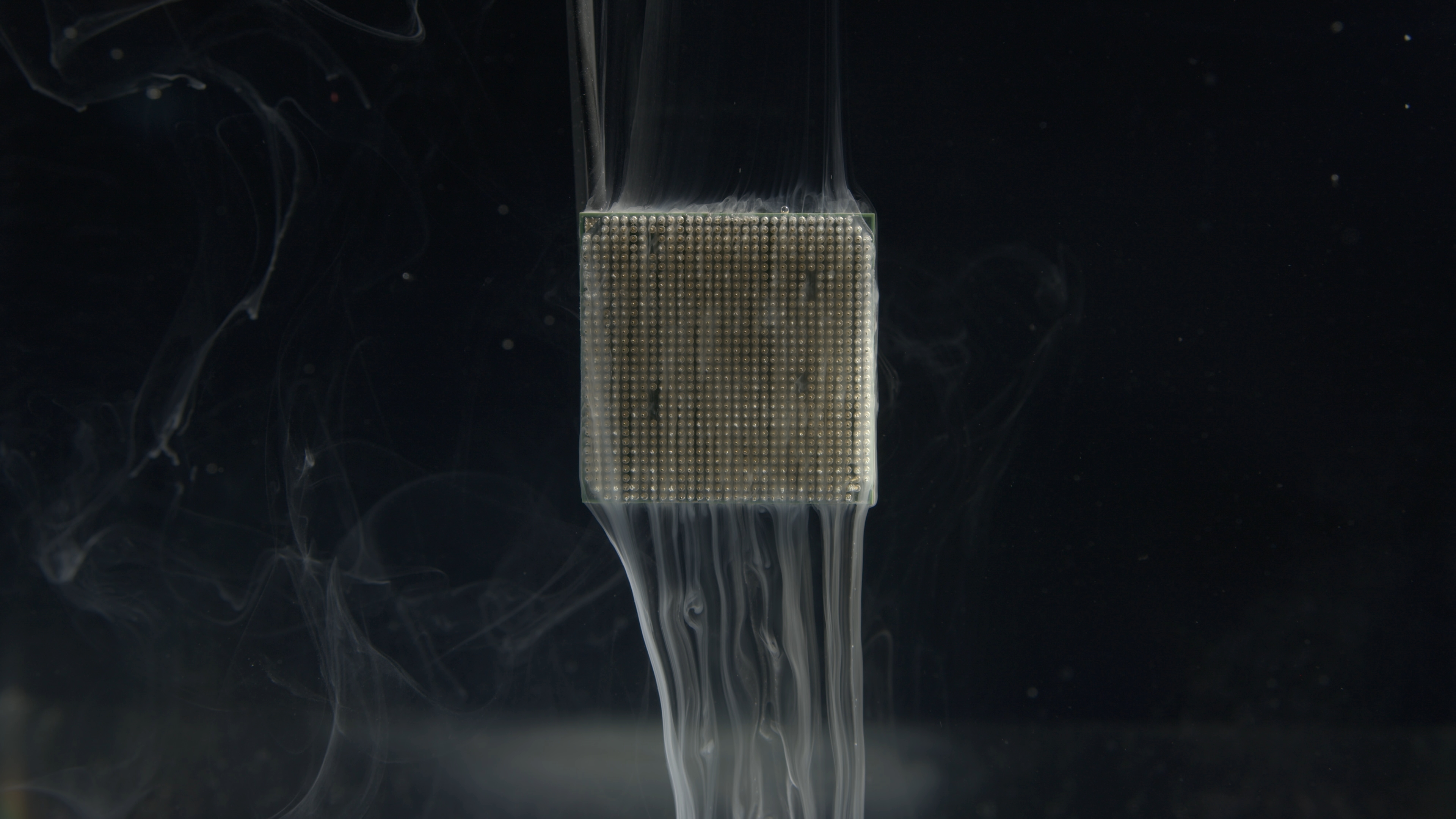
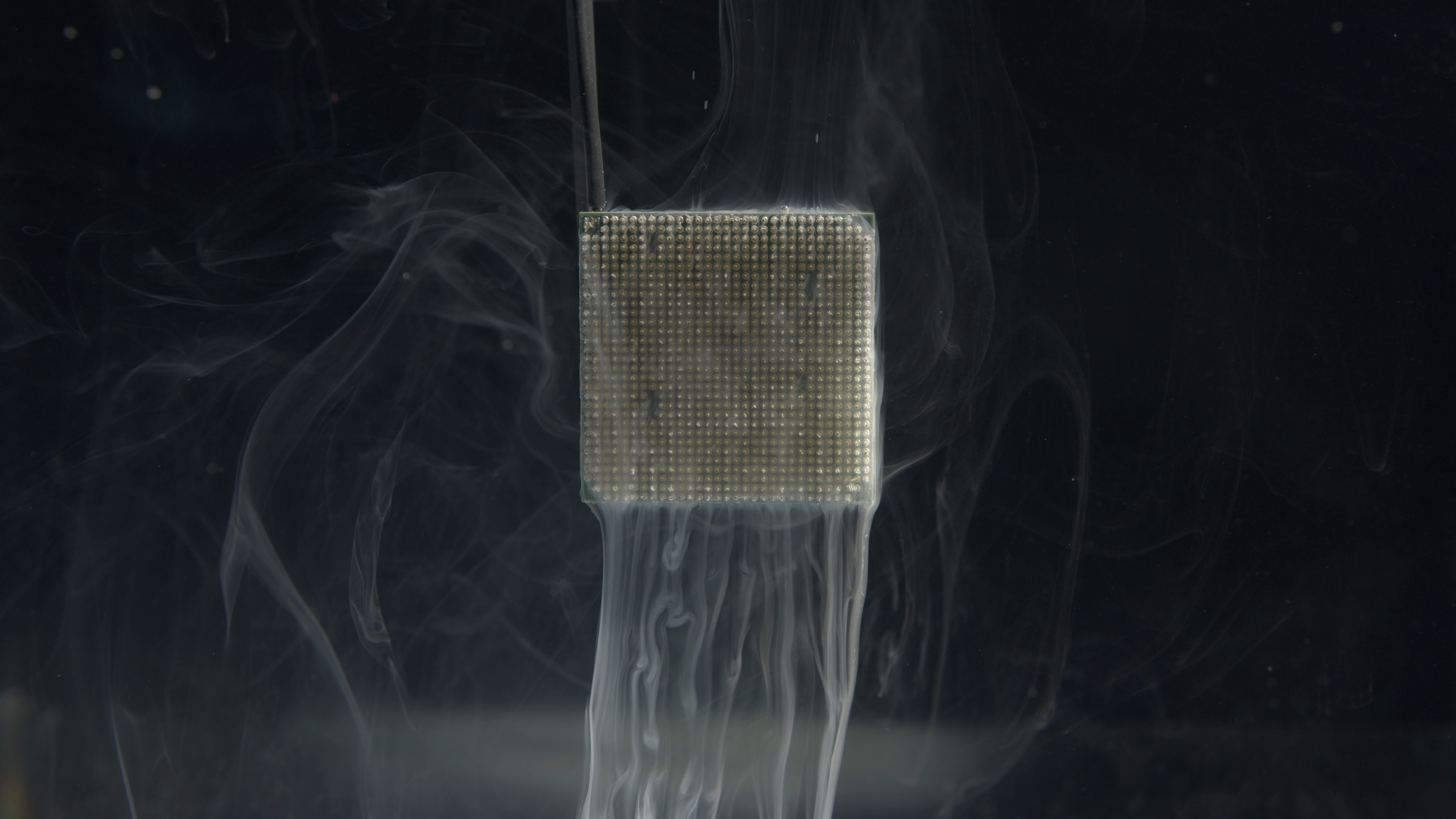


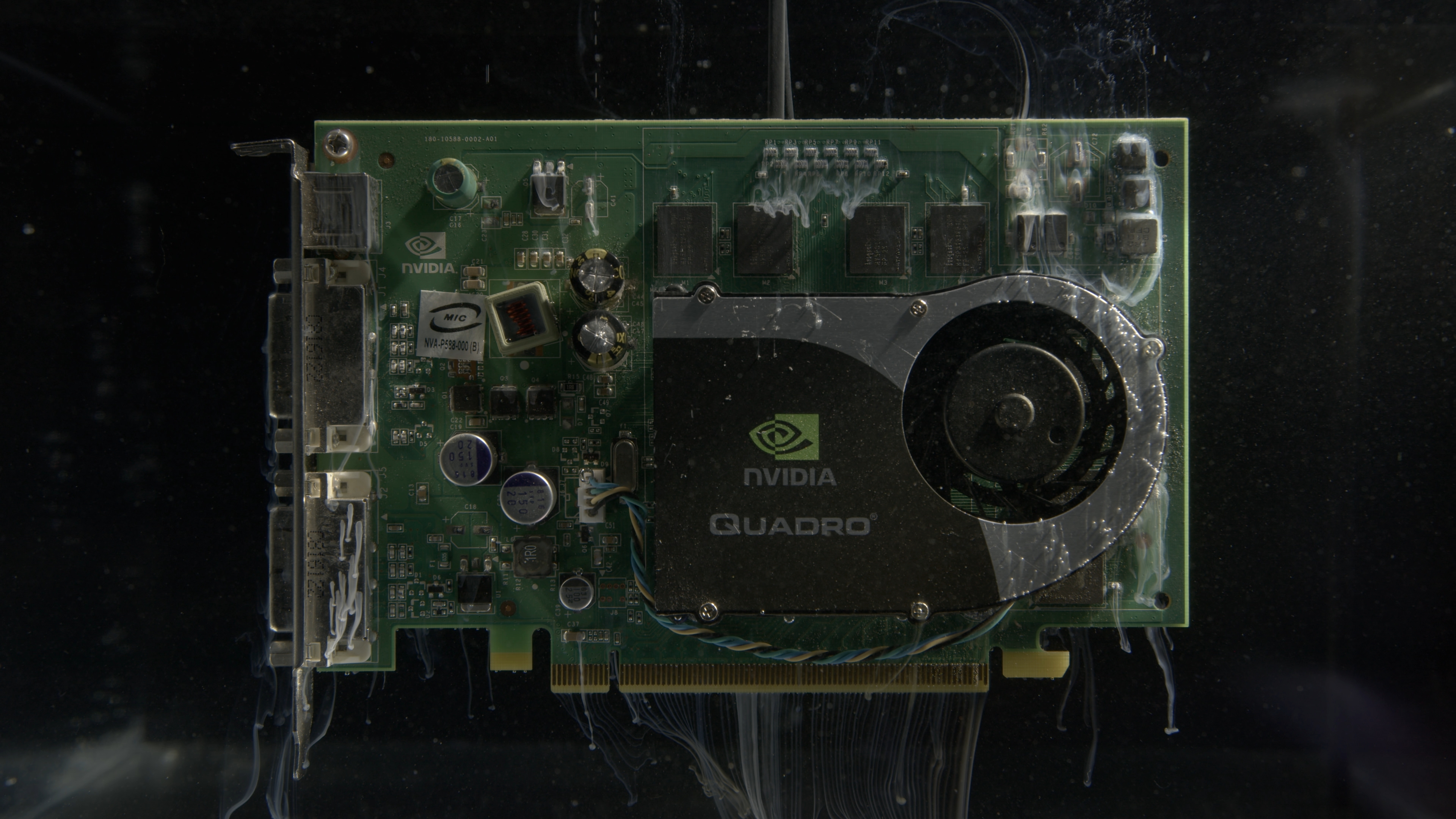

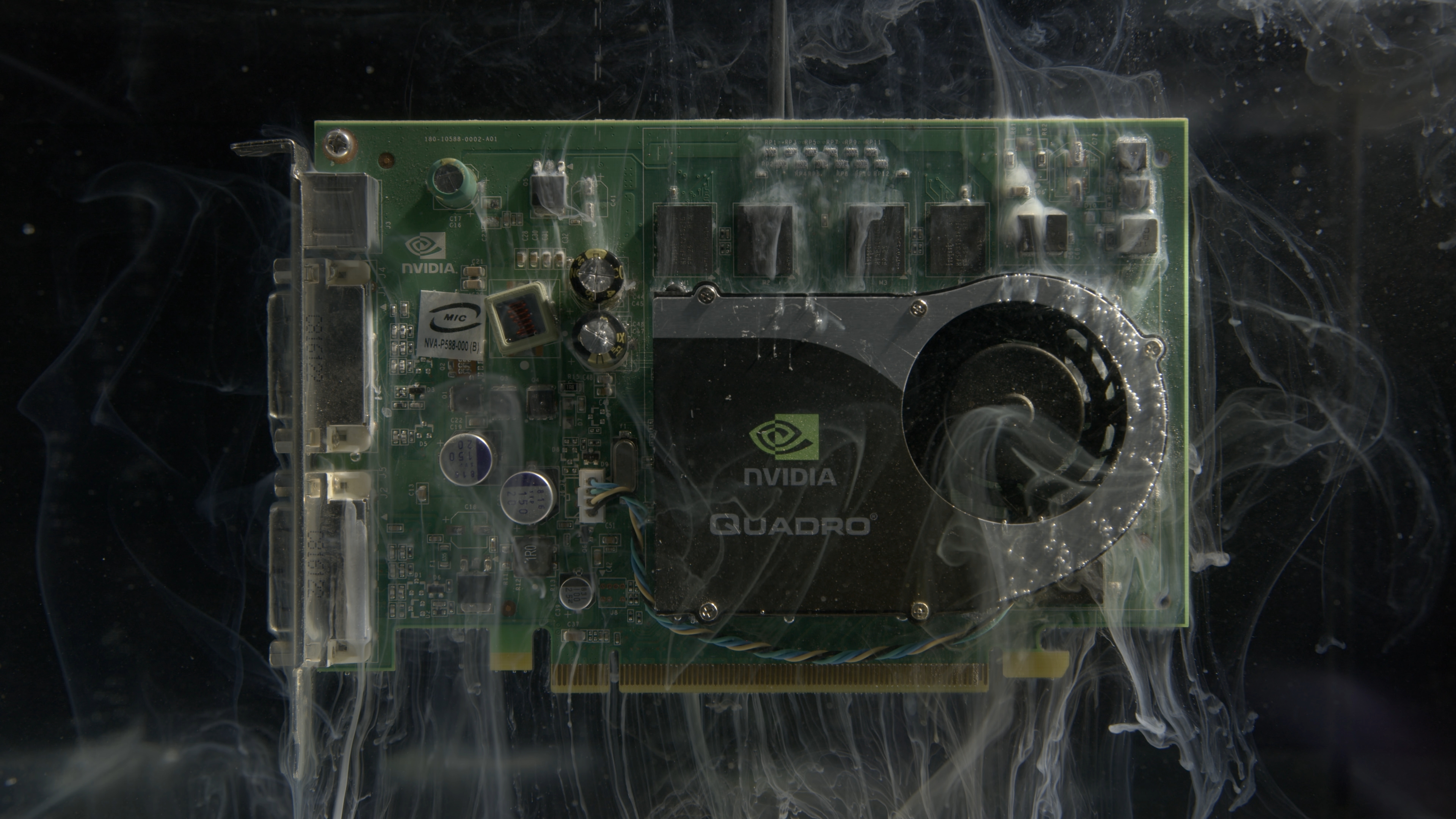
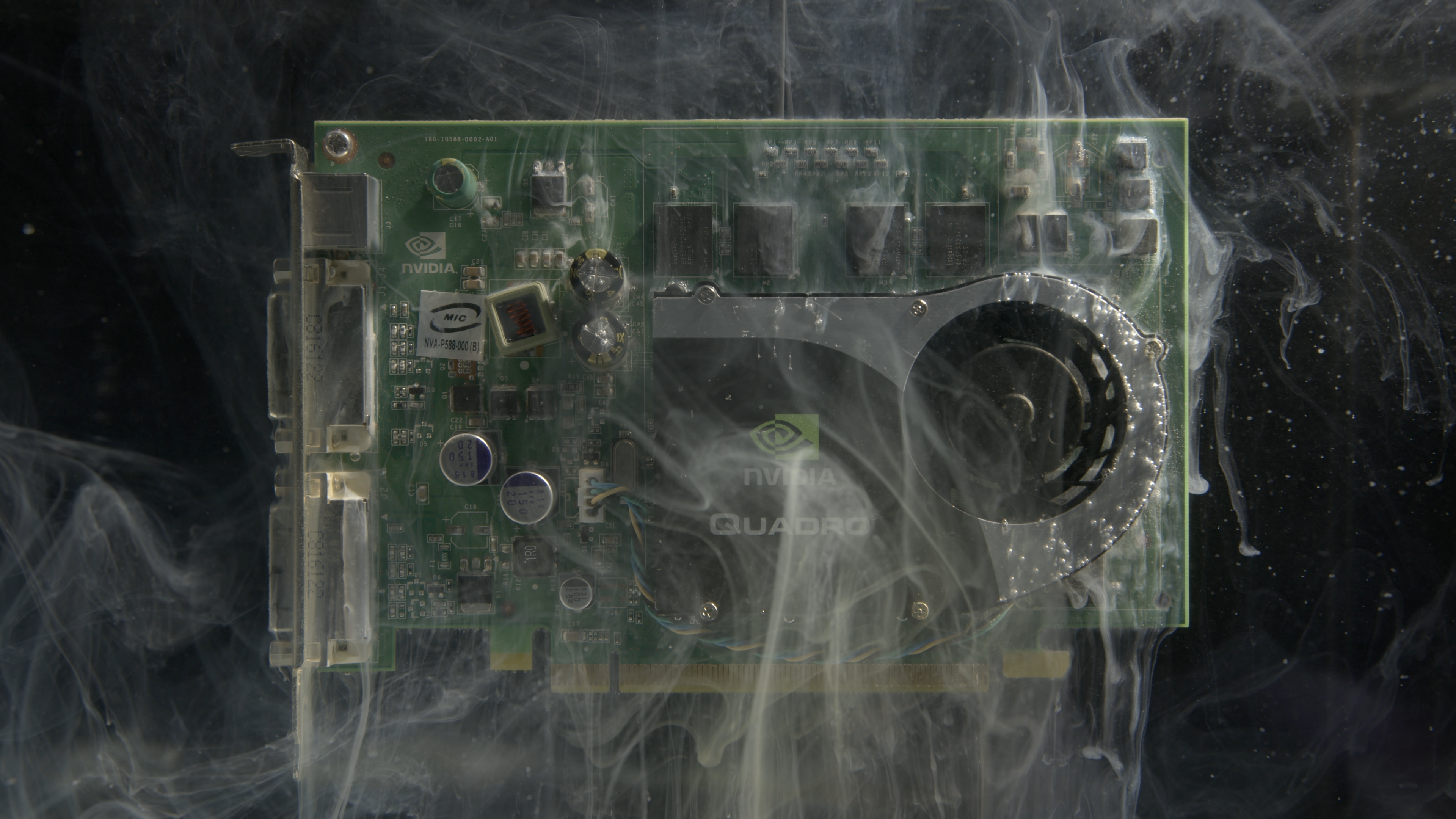

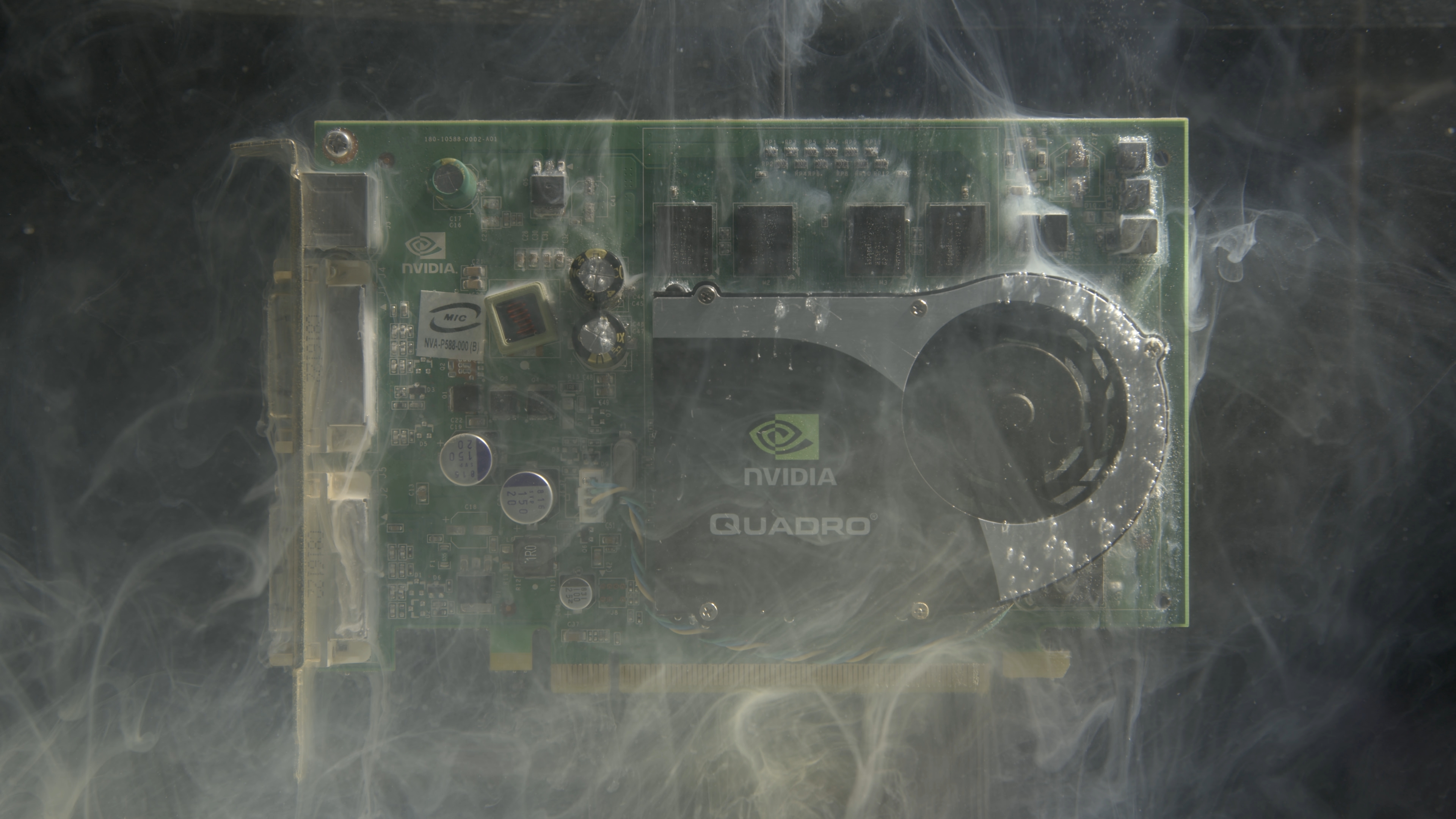
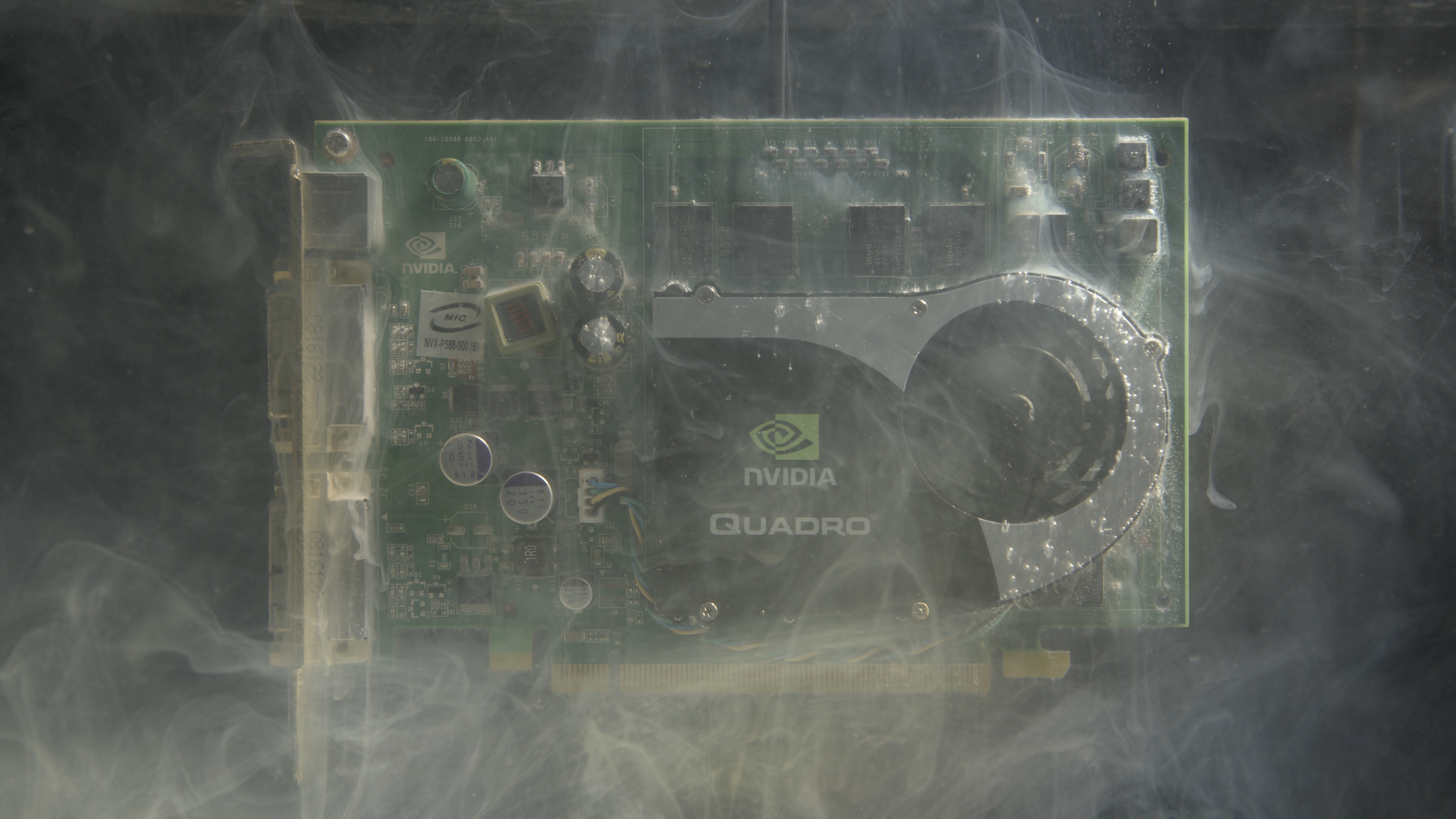
A work process eruditely thought through
This very particular protocol was defined during his artistic training: Olivier de Serres and Beaux-Arts in Paris, then the Fresnoy in Tourcoing. Pivotal years for Hicham Berrada, looking back on them: ‘Jean-Luc Vilmouth, who taught at the Beaux-Arts, pushed his students to try their hands at performance. That left a mark on me. It was during the same period that I opted for video and which I began to work on by filming glass objects and projecting them live. My two years at the Fresnoy allowed me to establish a principle: to produce paintings on the basis of the video medium.’ Retrospectively, his work Un serpent dans le ciel (2008), a balloon filled with helium and fitted with a smoke device, can be viewed as the validation of his modus operandi. The artist lays out the details of his approach: ‘the balloon is launched into the sky and produces a fleeting drawing in the sky. My work leans on the following method. Carry out research: how much helium is required, the quality of the smoke, studying the combustion and understanding certain parameters such as the mouth of the smoke device, which will make the line thick or not. Then, once the mechanism has been triggered, I no longer have any mastery of the work. I become a spectator and I watch the work make itself and then unravel.’ Hicham Berrada individually tests certain chemical reactions with the aim of recording the information. =Next comes the moment of intuition. ‘I don’t have an image in my head, but I have a wish for tempo, to create an ecosystem of materials and reactions which could form a landscape.’
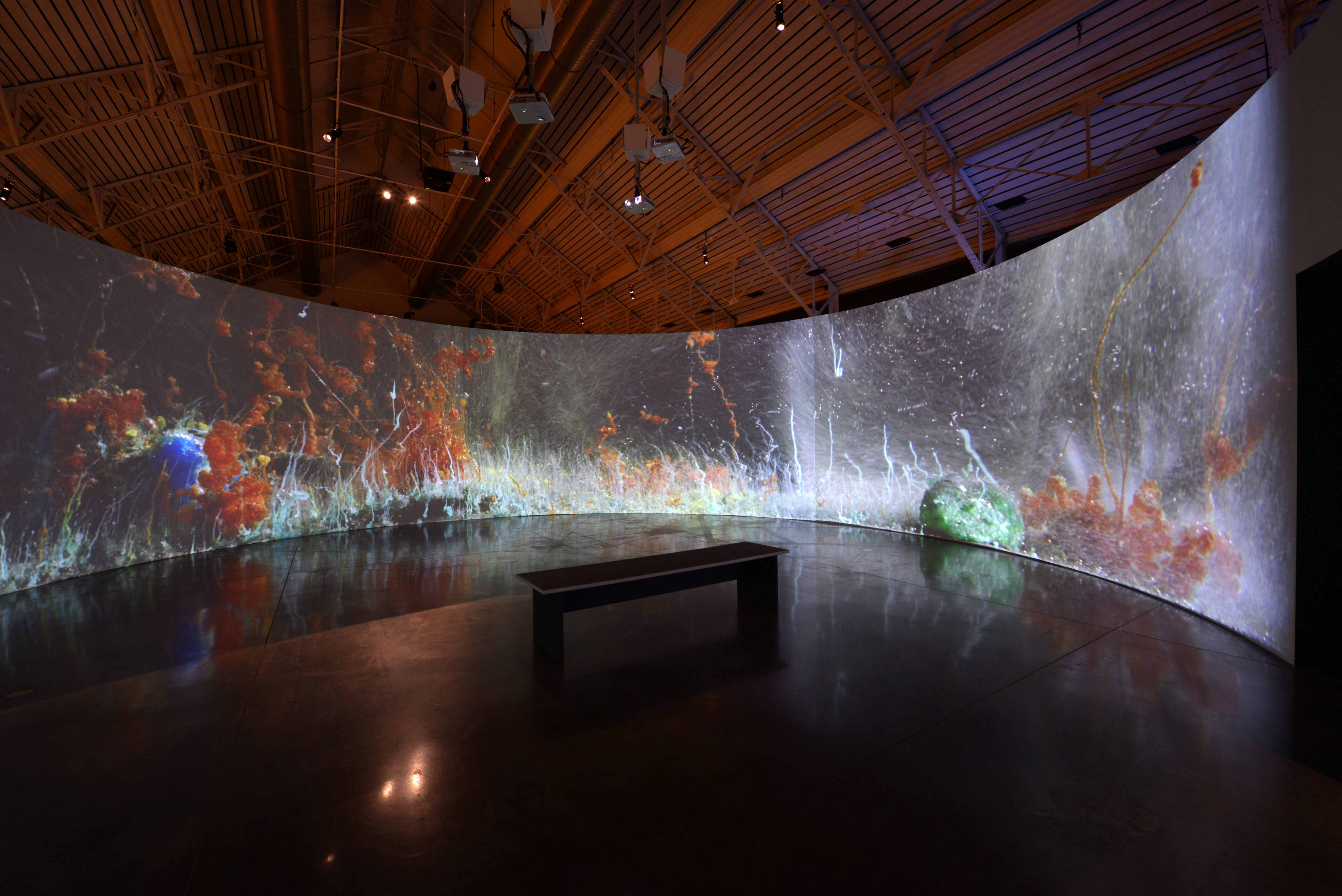
Hermetic worlds and variations of forms
One of the most interesting aspects in the work of Hicham Berrada is observing how the artist navigates between the art disciplines so effortlessly. Pictural art? Living installations? Videos? No matter the field of art in question. On each occasion, a hermetic world offers its magic to the visitors. In the most recent version of his series Présages, video enables an immersive dive. The artist describes his apparatus: ‘I film with HD cameras which allow to me work on very elongated ratios and to present my work on semicircular or circular installations (Editor’s note, one of these variations could be viewed at the most recent edition of KIKK). They are installations through which I invite the spectators into the heart of the image, immersed within nature.’ In Mesk Ellil (created in 2015 and presented at the Arab World Institute in Paris up until March 2024), a set of 7 tinted glass terrariums is laid out in a room. These hermetic gardens play host to a single variety of plant: Cestrum nocturnum. Its distinctive feature? It is only at night that its greenish-white star-shaped flowers open up. Hicham Berrada’s apparatus switches the process day and night and allows viewers to enjoy the rare spectacle of these flowers blooming and releasing a scent of jasmine and lime, one of the most powerful aromas of the plant world. ‘I love producing a work which lives out of step with our world. Here the nocturnal flowers live a life in reverse,’ smiles the artist.
A work on time
In reality, several of Hicham Berrada’s works can also be assessed through the prism of time. He himself partially concedes it: ‘the idea of slowing down, of taking some time, appeals to me. My work offers something slow and contemplative, like when you are looking at a landscape. Whilst in our societies attention requires an effort. Nature has its own rhythm, the shapes it creates need time to be constructed. In the end, time is perhaps one of the things over which human beings have no effect.’ Doubtless true. Apart from in the worlds imagined by Hicham Berrada because it is precisely this time scale on which several of his works are based. Masse et Martyr, presented in 2017 at the Palace of Versailles, consists of immersing bronze sculptures in aquariums through which a low electrical current is passed. The effect of electrolysis corrodes the bronzes and accelerates their decomposition. Slowly, curls of smoke lift away from the bronzes. They drift through the water and cover the bronzes with a downy covering before forming a cloudy carpet at the bottom of the tank. Hicham Berrada sums up the desired effect. ‘This procedure is an accelerated ageing: the bronze is dissolved in six months instead of 10,000 years.’
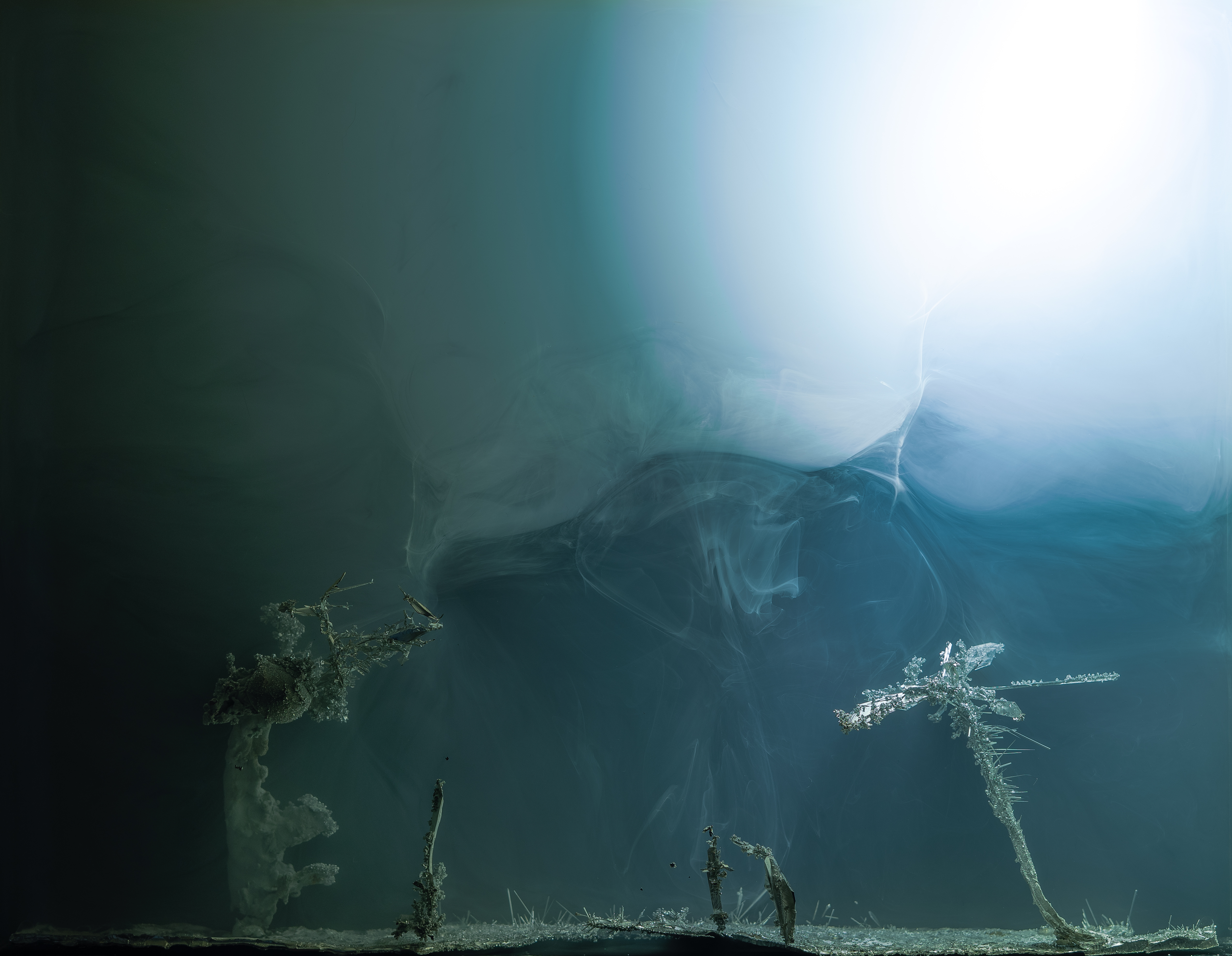
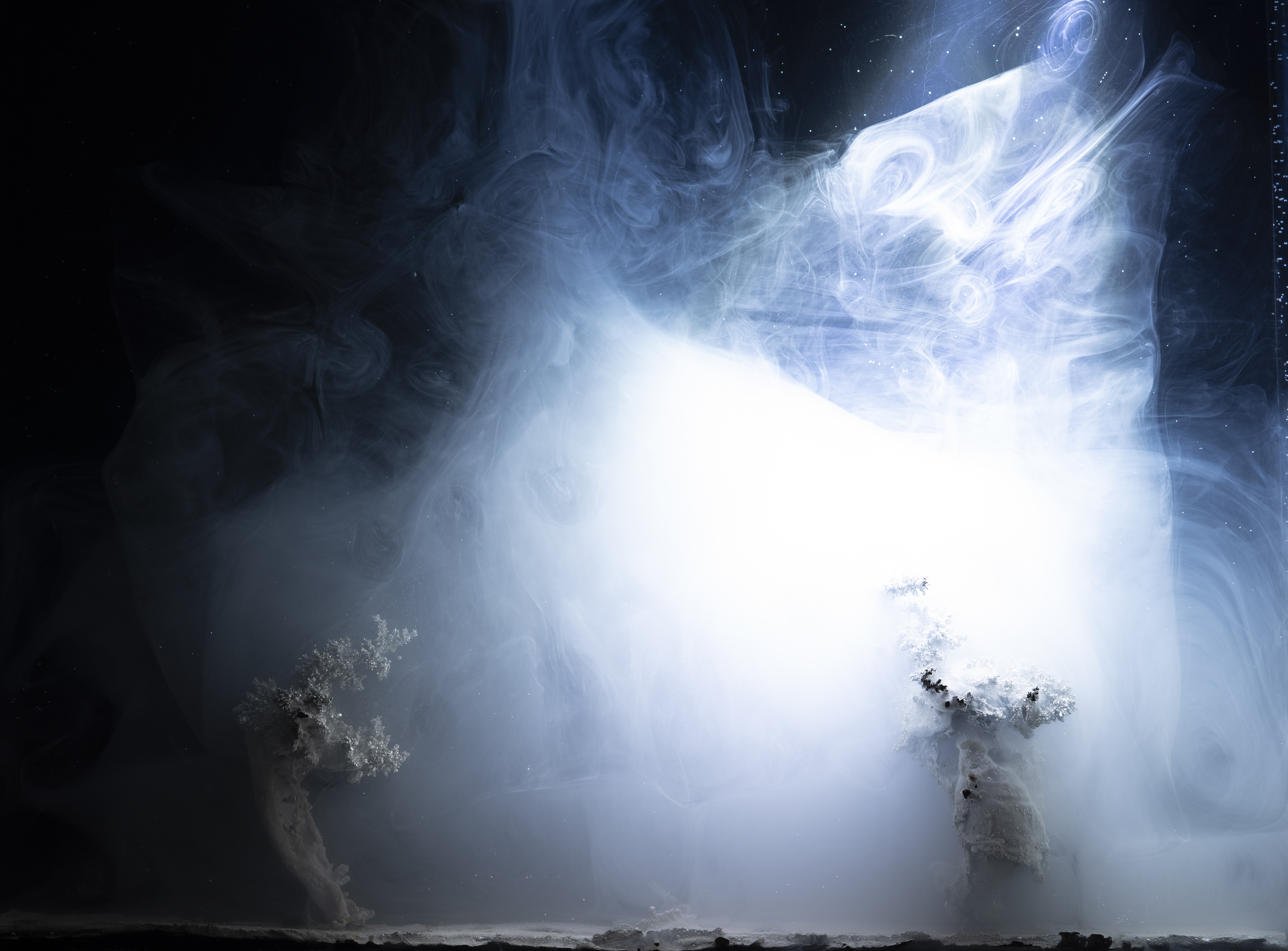

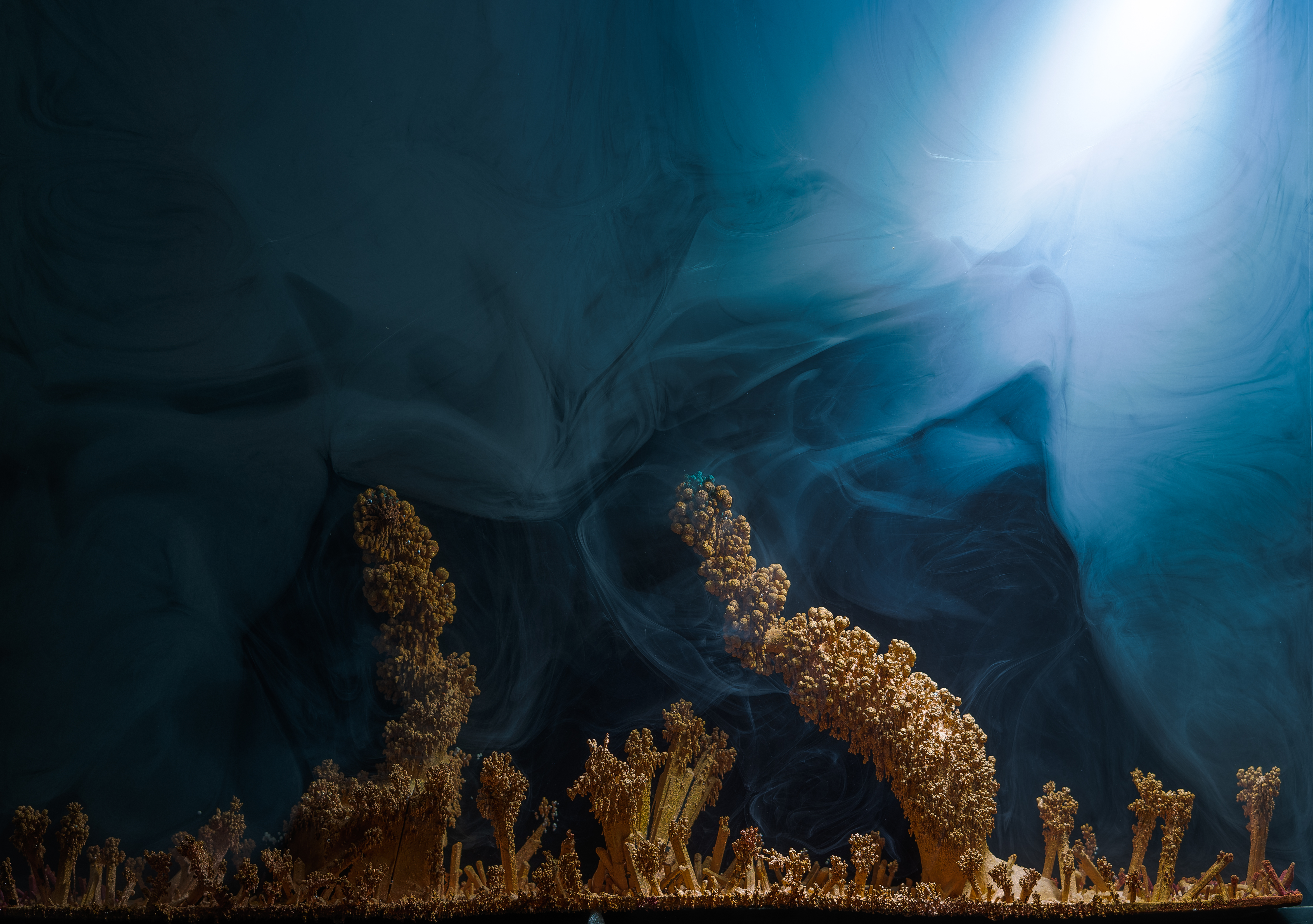

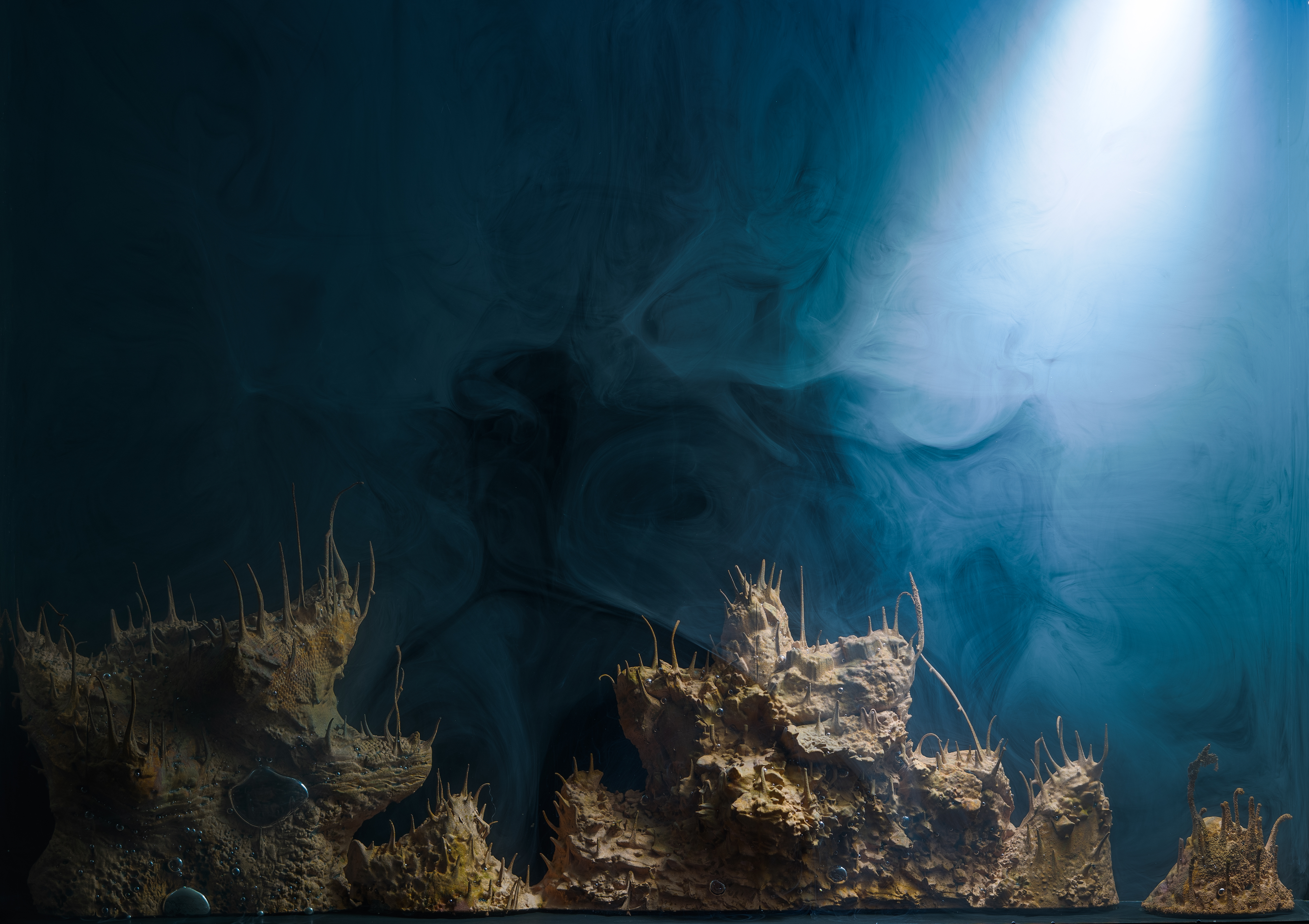

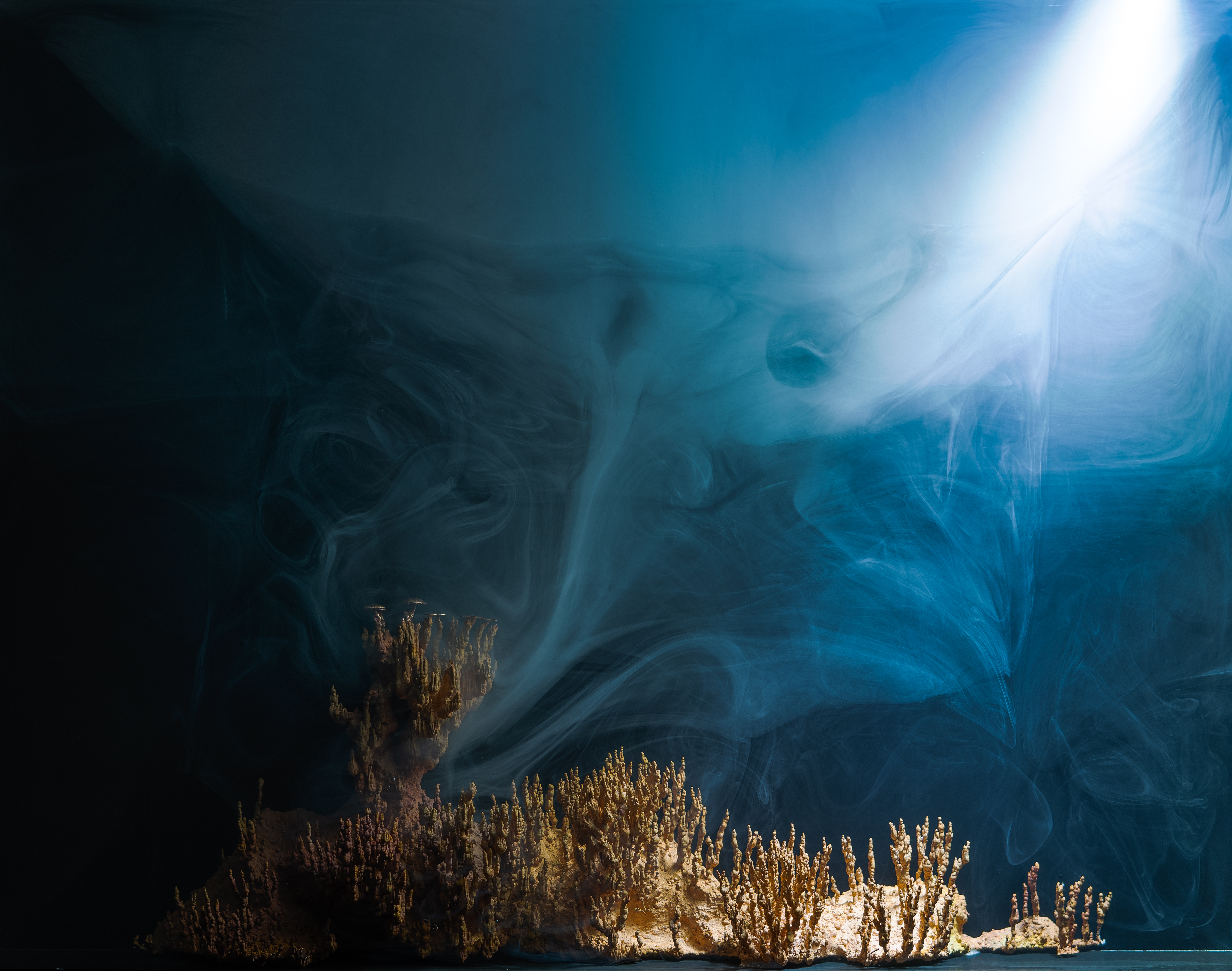
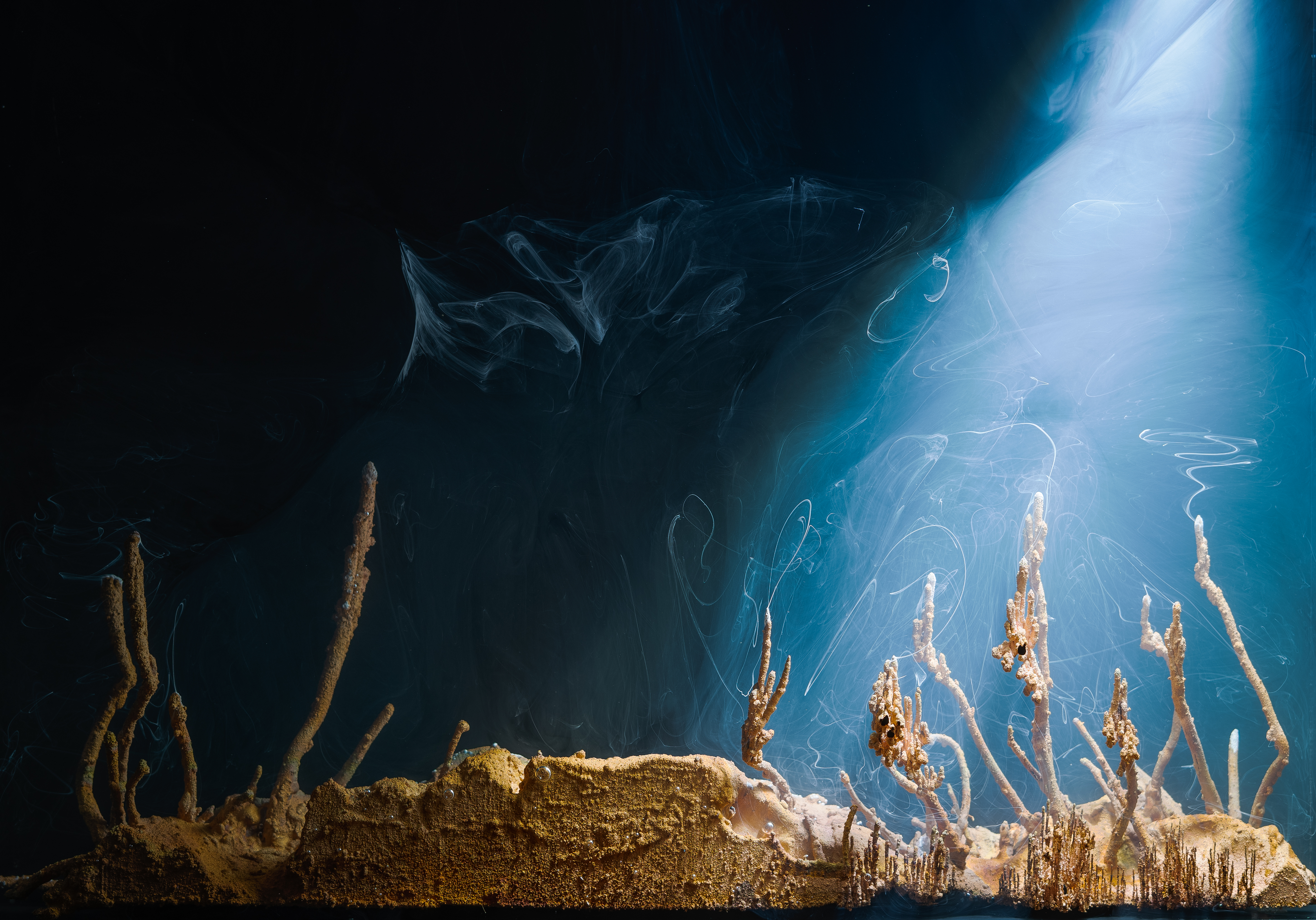

The relationship with time is also broached in a different manner in the series Permutations and Cartes mères. Here, he uses manufactured items – electronic components and circuit boards – which he returns to their basic elemental state, playing with the notion of reversed time. ‘Our immaterial digital world rests on objects which, when all is said and done, are material. Human beings have appropriated elements in order to transform them. Me, I do the opposite: by electrolysis, my apparatus separates the elements, copper, tin. They return to their original state. I love seeing a processor disintegrate and give off smoke. I have the feeling I’ve got an image which matches our society very well,’ notes the artist, who is represented by the gallery owner Kamel Mennour. Should we see in this an allegory of the future of humanity? Perhaps we should, on hearing let slip a ‘Nothing is forever in this world’. That is also true of his works, even if it is a certainty that they will make a lasting impression in the history of art.
A story, projects or an idea to share?
Suggest your content on kingkong.

